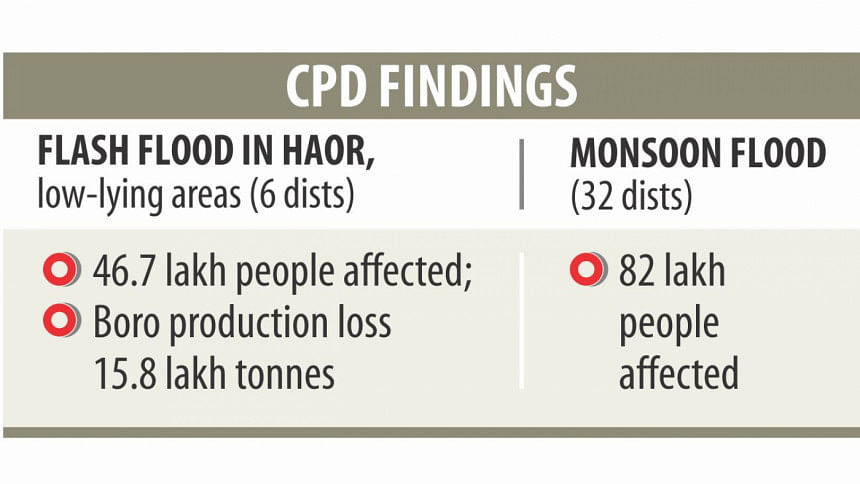Back to 'rat theory'

Over three months after the Anti-Corruption Commission sued 61 people for mismanagement and corruption in the construction of dams in the country's haor areas, the water resources minister once again held rats accountable for the destruction of embankments.
But he did not rule out possible corruption in the projects.
“I won't say there won't be any looting [of public money]. We won't be able to stop it. The Water Development Board [WDB] is not an isolated organisation; it's not an isolated society. It [WDB] too is part of the total system where corruption exists,” said Anisul Islam Mahmud.
He was addressing a dialogue on “Flood 2017: Situation and Way Forward” organised by the Centre for Policy Dialogue (CPD) at the Centre on Integrated Rural Development for Asia and Pacific (Cirdap) in the capital.
On July 2, the ACC filed a case against 61 people, including contractors and WDB's suspended Superintendent Engineer Nurul Islam, Additional Chief Engineer Abdul Hai and 12 other officials.
The anti-graft body lodged the case after investigators “found evidence of irregularities” in the construction and maintenance of the dams.
Speaking at the programme, eminent water expert Ainun Nishat expressed concerns that there might be further corruption in the repair works of the roads and embankments in the affected region, and called on the government to engage people in the work to check it.
“Because they [locals] know that if the projects fail, they will have to suffer…. Build culverts and drains wherever necessary on and along the roads. Don't repair roads for this year. Do a study to find out why a particular road is damaged every year. And then take measures accordingly,” he said.
The water resources minister, however, blamed the locals living on the embankments for the damage of the dams.
“Rats are attracted to these households and create holes on the dams. A small hole in a dam could damage an embankment badly,” he said.
He made the same claim soon after the embankments gave in during the flashfloods in the haor areas in Sylhet region in March-April.
The minister said they were considering redesigning the dam to minimise the impact of climate change.
Debapriya Bhattacharya, distinguished fellow at the CPD, said there should be a new approach to tackle flood.
If the agriculture is not developed, infrastructure not redesigned and administration not upgraded in line with the modern demand, flood-inflicted damages will remain to be a big concern, he noted.
Zafar Sadique and Estiaque Bari, both senior research associates at the CPD, gave a brief presentation on their research titled Flood 2017: Assessing Damage and Post-flood Management.
The financial cost of this year's monsoon flood was likely to be about 0.35 to 0.44 percent of the estimated GDP of 2017-18 fiscal.
The government estimated 7.4 percent GDP growth for the fiscal 2017-18.
The research found around 46.7 lakh people and 10.3 lakh households in low-lying areas and haor of six districts were affected by the flash flood in March-April, inflicting a loss of about Tk 5,300 crore.
Then in late August, the monsoon flood affected 82 lakh people of 32 districts.
It will cost about Tk 2,600 crore for repairing and rebuilding the houses and another Tk 4,500 crore will be required to repair and rebuild roads, culverts and embankments damaged in the flood.
The study found the government reliefs were timely but inadequate.
Mia Hossain, a farmer of Sunamganj who was present at the programme, said the government relief for the flood victims was not sufficient.
According to the study, a number of embankments were damaged due to poor maintenance.
Dhirendra Debnath Shambhu, president of parliamentary standing committee on relief and disaster management, and Engineer Mahfuzur Rahman, director general of Bangladesh Water Development Board, among others, spoke on the occasion.

 For all latest news, follow The Daily Star's Google News channel.
For all latest news, follow The Daily Star's Google News channel. 








Comments